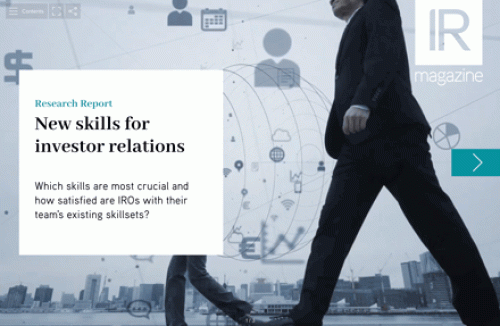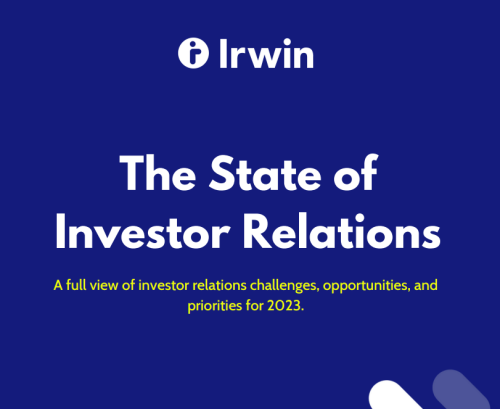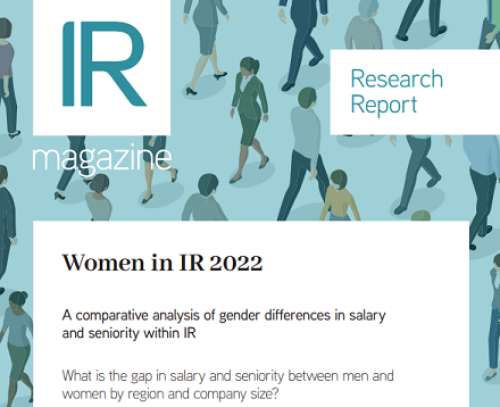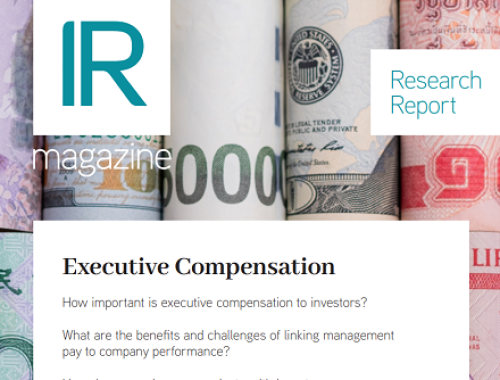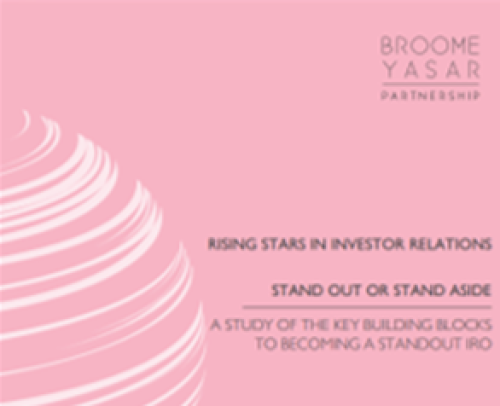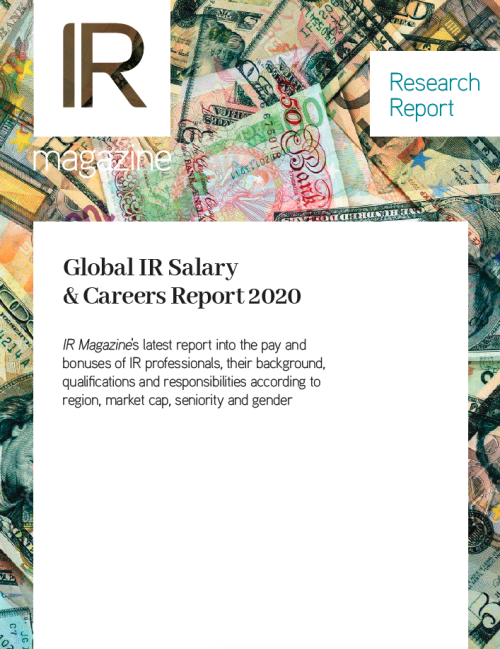With additional training, the IR director could take on the position of share-price strategist, says Ian Roundell, head of IR at Credit Suisse
The title ‘investor relations director’ rather speaks for itself. It relates to developing, sustaining and deepening the company’s relationships with its investors. Some organizations refer to this as role as communications director, corporate communications director, or even marketing and communications director. This article suggests a radical rethink of the IR director’s role, to view it more as someone who is a share-price strategist and who outlines the business benefits.
It’s interesting to observe how the IR director’s reporting line suggests his or her positioning within the organization.
Many IR directors report to the chief financial officer, although some report directly to the CEO. Even in this case, however, several IR directors do not consider themselves to be part of the inner sanctum. If the CEO calls a meeting of the top four, it’s unlikely the IR director will be involved – though he or she probably does make it into the top 12.
How IR directors are perceived
The IR director’s function is viewed primarily as one of external communication, which is why he or she may also become aligned with marketing. In the majority of cases, wherever he or she is positioned, his/her role is normally seen to be one of business support. How does the management team view IR directors? Most chief executives view them as a support function because the IR director doesn’t lead a business unit, manage a product line or have specific operational responsibilities.
Management teams tend to view IR directors as a communication, marketing or investor relations person and therefore don’t always expect their presence at the top table. And in a few cases the IR director’s role still remains a mystery to the executive team. Most CEOs and CFOs see the IR director as providing a channel between themselves and investors to handle investor inquiries and provide company information to the market. This aspect of the IR director’s role means he or she must understand the financials.
How do investors view IR directors? They see them as a key way to obtain information. This means not only must IR directors be financially proficient, but they also need to be exceptional communicators – and in many instances good on their feet, too. Building effective relationships with investors requires a high level of interpersonal skills, backed up with a proficiency in designing (and often delivering) motivating presentations. It really is a multi-skilled role.
Most IR directors in the world’s top 100 companies have a team working with them. This team’s job usually reflects the IR director’s role and this team also spends a significant percentage of its time talking to individual investors, organizing events, and so on. Larger teams will probably have upwards of a thousand investor contacts through meetings and phone calls.
These teams organize regular presentations to different investor groups, which include the large annual and bi-annual presentations and one-off presentations for smaller groups. Today’s teams are usually exceptionally web-savvy in their channel mix, understanding the importance of video presentations online, for example.
Investor relations communication activity clearly focuses on investors, where much of the work involves explaining company strategy to them, providing regular company reporting and publishing company results. The brief for most IR directors and their teams, therefore, is to communicate and market the company’s messages to investors.
Why rethink the IR director role?
So far, so traditional – but there is a missing function that is much bigger than the current one. Landing it will require the next wave of vision surrounding IR functionality to create a new role: share price strategist.
One of the key factors in calculating share price is free cash flow, which equates with profit times a multiple. This is also understood in investor circles as the price earnings (P/E) ratio, where ‘earnings’ is used to describe the profit descriptor and ‘price’ the multiple descriptor.
If you ask your chairman or CEO how many people he or she employs trying to improve earnings and how many people are trying to improve the price, you are likely to get a common response. The vast majority of companies employ all their people in efforts to improve earnings because they assume the multiple is out of their control. But what if that primary assumption is false?
Fund managers know that every industry contains companies with a range of multiples. The best companies have the highest multiples, and these multiples decline on a sliding scale down to those considered to be the poorest companies (those with the lowest multiples). Because companies have different multiples, it is evident that there must be a specific method to calculate them.
Given that a mathematical formula for calculating the multiple exists – and that it gives varying results for each company – it must therefore be possible to influence it. This means it is possible to present to investors that your company deserves an increased multiple. This goes beyond simply presenting that your profit will go up and that your business therefore deserves a better multiple; most management teams assume their multiple will go up as long as they continue to prove their earnings will rise. But some factors, which are taken into account in terms of which multiple you are given, differ from those influencing your profit.
Exerting influence
Once one accepts it is possible to influence the multiple, it paves the way for a radical rethink of the IR director’s role to one that is very different from today. In future, the IR director could be the person leading on price. This means the IR director would spend far more time understanding the markets – and investors’ views of the company – than he or she currently does in trying to explain management’s view of the company to the investor.
This new IR director could bring his or her dual understanding of the market and the investors’ view to the top table. Here, he or she would be able to influence executive decisions about where to take the business in the future. But this function must be in addition to the IR director’s existing role because it doesn’t remove the need to communicate and build effective investor relationships.
What we need in future is an investor relations strategist, or share price strategist – a function that doesn’t currently exist in most organizations and one that falls outside the remit of business and marketing strategies. This role differs from the head of strategy, who focuses on overall business strategy, not share price strategy. Heads of strategy don’t usually spend all their time understanding market influences, market economics or investor views of the company.
The most logical person to take on this new function is the current IR director because he or she already has relationships with investors. Very few other people in the organization are likely to know the investors, and understand the markets, as well as the IR director. But he or she will need to free up most of his or her time to undertake this new job – and it’s fair to say that many IR directors could not walk into the role today without additional training.
New skills needed
Before IR directors can help their company influence its share price, they must first understand what factors affect it – and what is required to enhance the multiple. A share price strategist, or IR director, who understands the share price calculation would soon have the executive team create a space for him or her at the top table.
Many IR directors currently find share price calculations difficult, but a four or five-day educational program would soon have the new-style IR director up and running. Very few people know what goes into the multiple, and knowing this is essential for credibility with executive colleagues.
The IR director would also need a clear understanding of what is meant by the ‘economics of the market’, which is not the same thing as the economics of the economy. In other words, what an IR director really needs is an understanding of how the markets really work. Many IR directors already have more than 50 percent of that know-how and would therefore just need to top up their knowledge bank.
One particular benefit to the organization of such a development in the IR director’s role is sustainability. Some IR directors might fear they could influence the multiple, but only for a short period before the market goes down again. They might therefore hesitate to approach share price management in terms of the multiple. In reality, there have been only a small number of organizations to hit the market with a flurry – and a huge multiple – only to crash quickly.
Large organizations that are number one in their marketplace tend to have a long-term, sustainable multiple advantage over their competitors. Instead of being a short-term and quick-hit share price strategy, this multiple approach creates a long-term market advantage.
The overall business advantage is obvious: if the company demonstrates a higher share price, it can raise more money, which funds more growth – and a higher share price makes investors happy. But it also brings personal rewards for the CEO and executive team where their remuneration is share price-related – they will be very happy indeed.
Overall, we have a compelling case for IR directors to take on this new share price strategist role.
This article appeared in the July print edition of IR magazine.
This is the third article IR magazine has published in this series focusing on share price valuations and the factors that can and do determine them. The previous two are Decoding share price movements and IR and the economic cycle.

